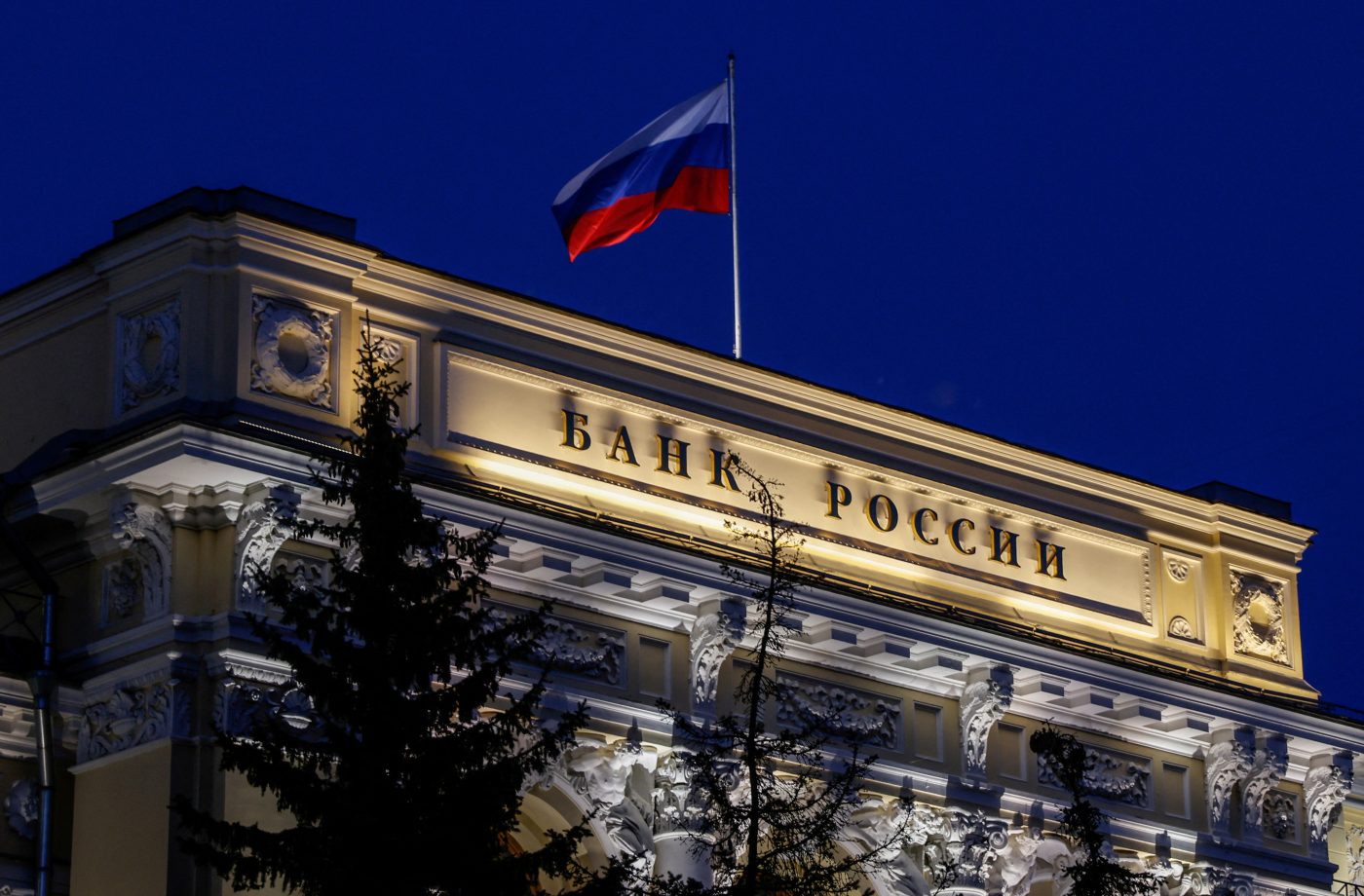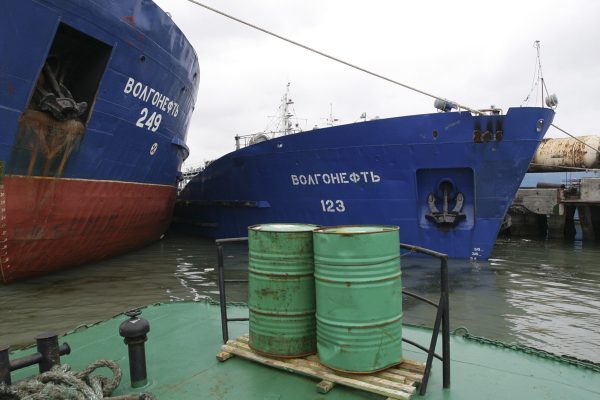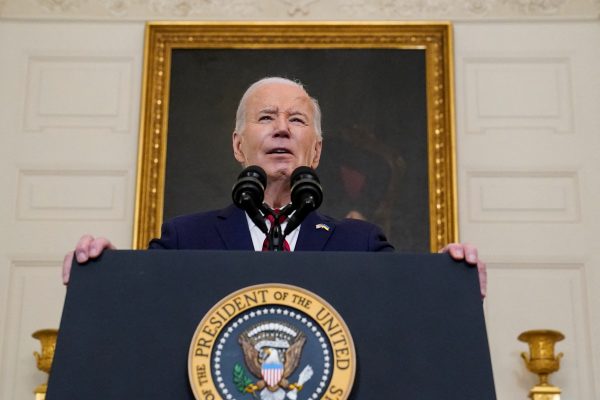A commonly heard complaint for much of the period since Russia’s all-out invasion of Ukraine in February 2022 (and indeed, since its annexation of Crimea in 2014 and invasion of Donbas that same year), is that Western sanctions are not working.
This is not just defeatist, it’s also economically illiterate. As we have seen time and again, sanctions work but they are slow and — like water running downhill — the route they take is unpredictable.
Let’s acknowledge this from the outset — Russia is showing great economic resilience and durability, as reflected in real year-on-year GDP growth of 1.6% posted in the first half of 2023, and the huge energy windfall achieved by Russia in 2022, which resulted in a current account surplus of over 10% of GDP.
The point is often made that ordinary people are feeling little real impact on their living standards from the war, while the economy can still sustain this war for many years to come. So why bother with sanctions?
While it is fair to say that Russia’s economy has shown resilience, I think some context needs to be provided before damning the entire Western sanctions regime and throwing it in the bin.
First, only one person knew with certainty that the full-scale invasion of Ukraine was going to happen in February 2022, and that was Vladimir Putin. Arguably he has been preparing for this moment for many years — I would say at least since 2015, when I first coined the phrase Fortress Russia to describe its economic policy settings.
The Fortress Russia policy entailed deleveraging and building buffers, ready I would argue, for the expected Western sanctions when the full-scale invasion actually happened; both fiscal and monetary policy was run way too tight in the run-up to invasion if Russia was supposed to be a peaceful country. Central bank reserves at the outset of the invasion were thus close to $600bn, while the country was running current account and fiscal surpluses, and public debt was less than 20% of GDP. These buffers have helped sustain the Russian economy through 18 months of war and sanctions. But they are now running out.
Second, sanctions regimes are a delicate balancing act, where the imposer seeks to harm the target without unintended collateral damage. The West has had to be careful in calibrating its sanctions response, so as not to impart a seismic and disruptive impact on global markets — and sanctions on Russia are particularly sensitive given the dominance that it holds in key commodity markets.
That explains why sanctions were not really calibrated to crash the Russian economy from the outset, but more to grind it down over time. And remember too that sanctioned regimes typically endure — whether that is Iran, North Korea, Iraq under Saddam, or Cuba and Venezuela. Their economies always continue to function, but just not very well. And that has been the case with Russia over the past 18 months.
Third, I think we are now finally beginning to see the impact of the war and sanctions bite, something revealed when the ruble crashed through the 100 level against the US dollar in mid-August.
Now, Kremlin apologists might argue that all this was engineered by the central bank and the finance ministry to boost the ruble value of oil revenues, and thereby moderating the budget deficit.
But open criticism this week by Maxim Oreshkin, Putin’s economic adviser, of the policies of the central bank in allowing the ruble to weaken suggests otherwise. Oreshkin pointed out that a strong ruble was an important psychological signal to the world of Russia’s strength. Indeed, no country likes to see its currency devalue, as this implies economic problems, particularly a weakening balance of payments position and causes high inflation. So the central bank would not have let the ruble slide unless it was in difficulty.
Meanwhile, the response of hiking policy rates in defense of the ruble will stall real GDP growth. Russians will suffer higher inflation, lower living standards and spending power, and lower growth.
The weaker ruble is a flashing red light indicating that sanctions are indeed working. The oil price cap has generally kept the price of Urals blend oil at or under the $60 a barrel mark. This has massively reduced energy export receipts. Indeed, when oil prices spiked to $120 a barrel with the initial shock of the invasion, Russia was earning around $1.2bn a day in energy export receipts, but since then energy exports have halved to less than $600m a day as of July 2023.
There is another key — and forgotten — aspect to sanctions. They impose very high costs on the target country.
So Russian import costs have surged. The Kremlin has often been able to acquire critical and even sanctioned imports, but it has to pay top dollar because of the expense of sanctions busting. Lower export receipts and higher import costs resulted in the current account surplus dropping by 85% year on year over the first seven months of 2023.
Capital flight — which shows many Russian voting with their feet or wallets — meanwhile, continued apace, as seen in data of partner countries like Turkey, the UAE, and those in Central Asia and Transcaucasia. At least $60bn has left since the full-scale invasion, and probably much more.
Sanctions meanwhile froze at least half the central bank’s reserves of $600bn (that were unwisely held in foreign jurisdictions), and much of the balance is now thought to consist of illiquid or soft currency reserves, which are hard to trade. Its ability to defend the ruble is hence impaired and that has been reflected in the weaker ruble.
The central bank has responded by hiking policy rates and there has been talk of tighter capital controls.
These might artificially stabilize the ruble in the short term but at the price of damaging the business environment and hurting growth, and eventually depressing living standards.
And as with the oil price cap and sanctions, this is seen through a deterioration in both the balance of payments and the fiscal position, which means that Putin will increasingly have to make difficult guns-versus-butter decisions.
With guns likely winning out, this downward pressure on ordinary people — through rising prices and lower social spending — risks rising social unrest. Whether any of this changes the Kremlin’s calculations about the sense of continuing war in Ukraine, sanctions are having a significant effect on Russia.
Eventually, one day, the grinding of the Russian economy will cause it to crack and perhaps shatter. We cannot know when that moment might come, but we do know it increases the difficult choices facing the Putin regime. That is good news.
Timothy Ash is a Senior Emerging Markets Sovereign Strategist at RBC BlueBay Asset Management. He is an Associate Fellow at Chatham House on their Russia and Eurasian program.
The opinions in this article are those of the author.
Europe’s Edge is CEPA’s online journal covering critical topics on the foreign policy docket across Europe and North America. All opinions are those of the author and do not necessarily represent the position or views of the institutions they represent or the Center for European Policy Analysis.





